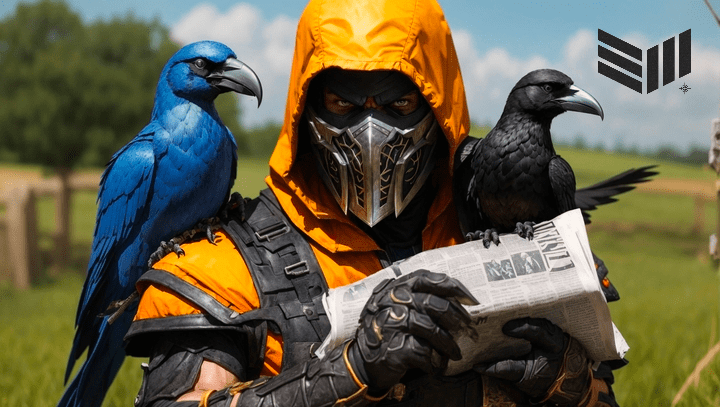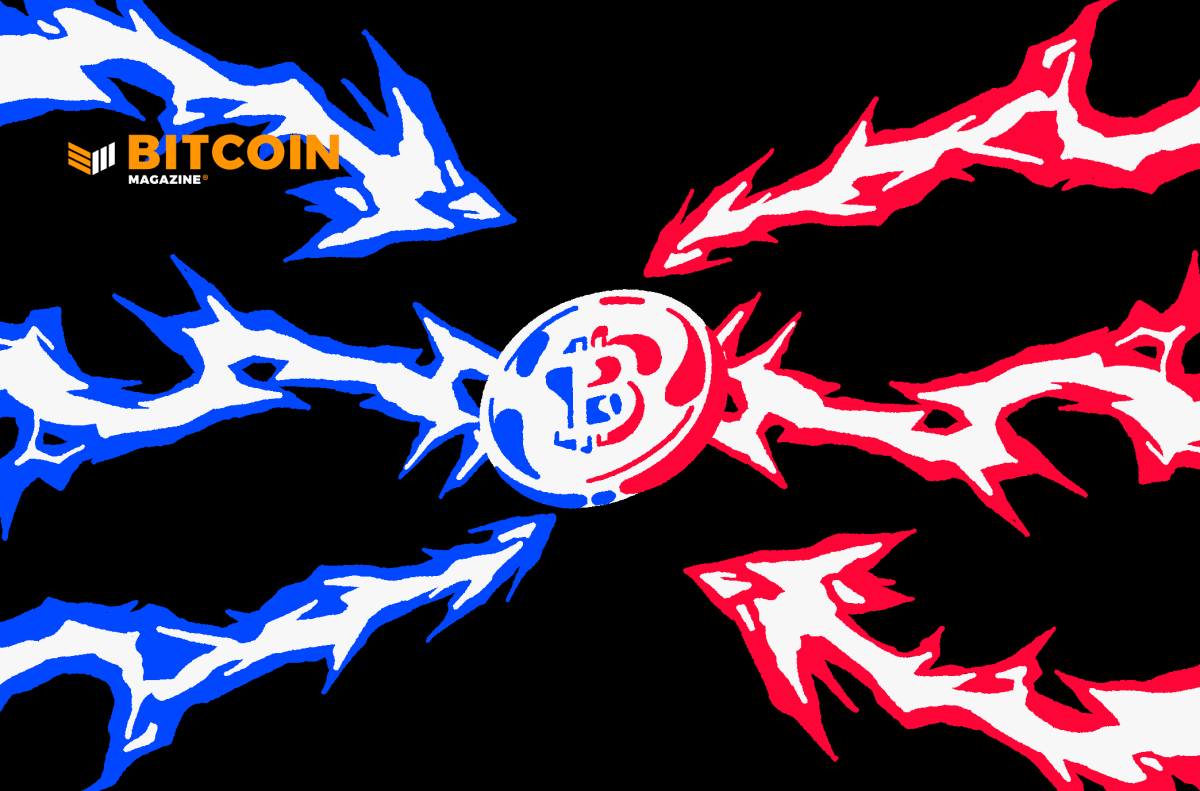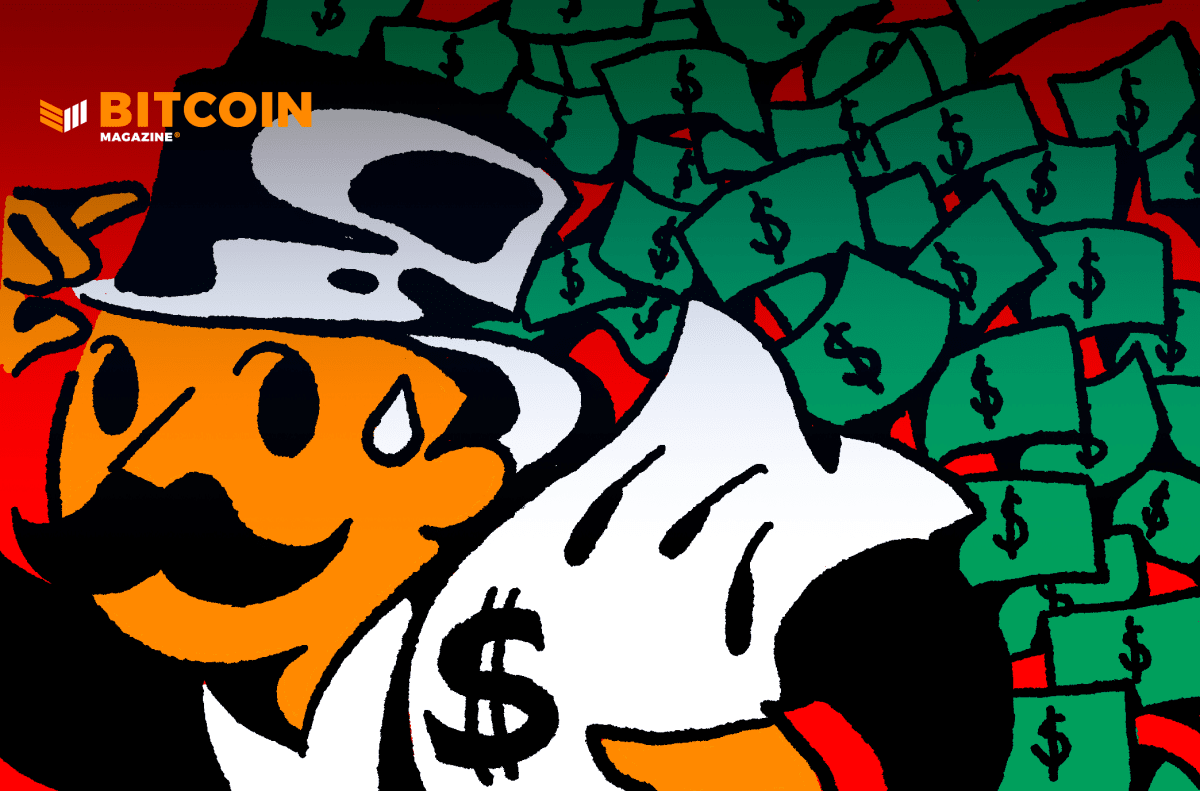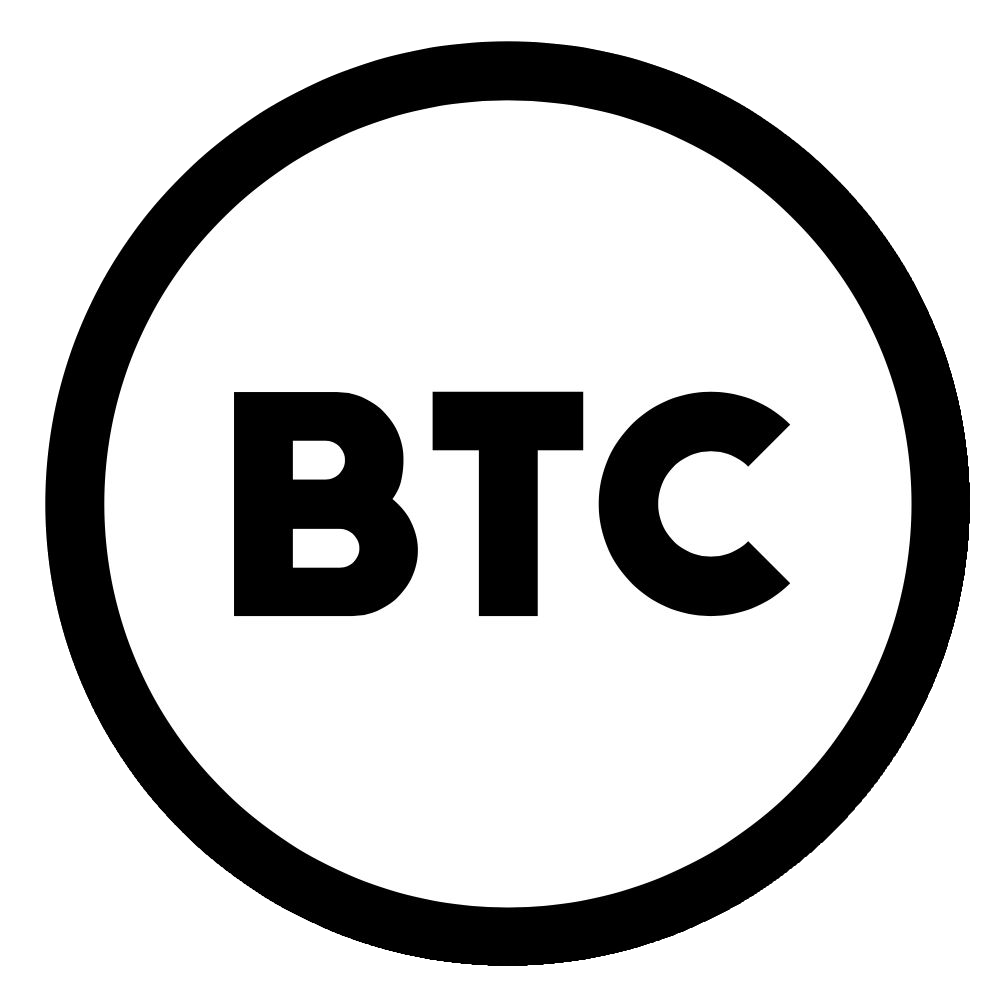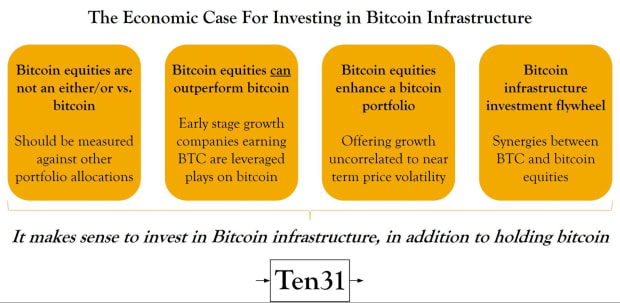The Last Days of Satoshi: What Happened When Bitcoin’s Creator Disappeared
10 years after Bitcoin creator Satoshi Nakamoto’s disappeared, Pete Rizzo distills the full story of his time as project leader into one readable article.
“Tradition demands that there is no gap between kings.” – Terry Pratchett
They suspected that he was British[X], that he was Yakuza[X], that he laundered money[X]. They wondered if he was a woman[X], laid claim just in case[X] and joked about fucking him[X]. They kept contingencies for if he proved crazy[X], eyed for shifts in his sleep[X], debated why he spoke and didn’t speak and sent him eager patches signed with pretty please[X].
To be sure, by the waning days of 2010, Satoshi Nakamoto was still acknowledged for inventing Bitcoin, and was respected for growing the world’s first decentralized digital currency into a $1 million market. But as frustrations with his authority and availability built, it became all too common for users to decry Satoshi the admin[X], Satoshi the bottleneck[X], Satoshi the dictator[X].
If it can be said a quiet clamour against Bitcoin’s creator had been simmering since summer, it soon became something of an outcry. As demands escalated, Satoshi sightings even assumed the role of sport, with users speculating when and why he might appear on the forums[X].
That’s not to say Satoshi was able to bring order to the discussion if and when he surfaced.
Indeed, as winter approached, a noticeable change in the conversation would begin with a wave of posts casting doubt over the project, and more specifically, Satoshi’s role in its operations.[X] In response, users drew a dividing line – it was not Satoshi, then still directing development, but the users who ran the software who were the project’s ultimate authority.
“There is no single mastermind in open source. It’s more of a brain where a single human is just a cell,” wrote ShadowOfHarbringer[X]. “If one day Satoshi says, ‘OK guys, it was just a joke with this Bitcoin thing, I’m closing down the project,’ we would simply fork the code.”
This line of defense was echoed broadly, even by Satoshi’s most active assistant, Gavin Andresen, who wrote in no uncertain terms: “If Satoshi goes rogue, then the project forks.”[X]
At the heart of this defense was a growing belief – stronger perhaps than even any confidence in Satoshi himself – that no Bitcoin user could be greater or less than any other, that they were all nodes on the network, authors of code, individuals responsible for the software’s success.
Still, the coming weeks would find Bitcoin’s early users exercising this power in ways that would upend assumptions about the software’s usability, politics, limitations and freedoms.
In the end, this awakening would amount to something more, the first assertion of authority over Bitcoin’s creator and his system of rules, one already defined by choices so absolute they may as well have been divine.
Wrote user Thrashaholic to one early critic[X]:
“So, you are comfortable with the laws of nature determining how much gold, silver, platinum, palladium is to be had? Name those laws ‘God’ if you will, it is no different than Satoshi.”
I. INNOCENCE
For Satoshi, this might have all seemed a far cry from the quiet of 2009 when in the months after he released the first Bitcoin software reviews were muted when made at all[X].
Indeed, as the year came to a close, the optimism that had so pervaded his early emails with famed cypherpunk Hal Finney would have faded into the distant past[X], while even casual responses to the Bitcoin mailing list had tapered off almost entirely[X].
But if Satoshi was by then convinced of the science behind Bitcoin[X] and could expound on its virtues as money[X], it is perhaps his addition of a simple forum feature to its official website that proves he had begun to think more deeply about the need to evangelize for his invention.
Certainly, it’s possible to infer the Bitcoin.org forums, launched in November 2009, would have done much to break the quiet surrounding his still obscure project[X] – a year after going live, it had processed just over two hundred transactions and lacked any available exchange rate.
Adding energy to the project already was computer science student Martti ‘Sirius’ Malmi, who devoted spare time to bug fixes, but the forums expanded this team of two. Asked what the price of Bitcoin should be, NewLibertyStandard would give a fumbling first reply: “paper bowls, no more than 50 count, factory sealed.”[X]
Together, the forum users would provide a better answer, establishing a first exchange and encouraging stores to accept the currency[X].
At the edges of cyberspace, Satoshi watched over it all, the lead developer and his sometimes assistant pushing close to 50 updates to the code that first year[X]. Users updated often and in short order, disbelief suspended by a step into the unknown.
Drip By Drip
What Satoshi thought of these initial visitors to the Bitcoin.org website, we can only guess, but by accounts, he appears to have been a humble and responsive host.
Certainly, most offered no more information about themselves than Satoshi, some adopting inelegant ‘nicks like Giik, Xunie and riX, others pseudonyms that were prosaic (SmokeTooMuch) or political (1currencynow), but almost never personal.
One name, however, would immediately stand out on arrival: Gavin Andresen. As opposed to the singular Sirius or Satoshi, the alias was, of course, discernible as a full name, complete with an irregular given name, “Gavin,” and succeeding surname, “Andresen.”[X]
Adding to the contrast would be his choice of avatar. Whereas most user profiles were no more than empty gray squares, Andresen played a smiling hiker ambling a trail. The image was apt. By May 2010, Bitcoin was hardly a beaten path; drawing Andresen and a first wave of Silicon Valley startup types was Bitcoin’s modest debut in the pages of InfoWorld[X].
But it would take more than a name to attract notice on the increasingly active forums, and Andresen’s first effort, launched in early June, would ensure he did just that.
He wrote in its announcement[X]:
“For my first Bitcoin coding project, I decided to do something that sounds really dumb: I created a web site that gives away Bitcoins… I’ve stocked it with 1,100 [bitcoins] to start. Why? Because I want the Bitcoin project to succeed.”
The Bitcoin Faucet, as the website would come to be called, was greeted with acclaim, winning attention from early contributors like Laszlo[X], and quickly growing more mythic than his recent purchase of two Papa John’s pizzas. More than a simple exchange, the faucet was an act of imagination, one that would help make real Bitcoin’s potential for online trade.
Whereas the money of the past sat stiffly in accounts, taking days to move between banks, payments flowed freely from the Bitcoin faucet from one internet user to the next. Within a week, Satoshi himself responded to the work, calling it “an excellent choice for a first project.[X]”
“I had planned to do this exact thing if someone else didn’t do it, so when it gets too hard for mortals to generate 50 BTC, new users could get some coins to play with right away,” he wrote.
The reply was enough to encourage Andresen to reach out to Satoshi in response, though his tone would betray just how different the two collaborators would be.
“I’m very curious to hear more about you – how old are you? Is Satoshi your real name? Do you have a day job? What projects have you been involved with before?” Andresen wrote[X].
“Anyway, Bitcoin is a brilliant idea, and I want to help. What do you need?”
That Andresen’s name had its own complex history, or that he was once widely known as Gavin Alexander Bell, was not yet a matter of anyone’s concern, nor would have been the irony in the idea his life was about to enter the shadow of yet another great inventor[X].
The Great Slashdotting
Trading by late June at nearly a penny apiece and seeing double-digit transaction counts daily, Bitcoin, it seemed, was on the verge of catching on. If the forums were bustling, so too was the caliber of its coders increasing, the releases becoming a communal and collaborative affair.
It wouldn’t be long before even Satoshi was swept up in the optimism, and as Laszlo, Gavin and a small clique of coders tested his builds, confidence got the better of even his keyboard when he suddenly announced the possibility that Bitcoin might exit beta[X].
At a time when most were compiling the code, the idea of a 1.0 release was headline news.[X]
“We should try to get publicity, simultaneously advertising on forums, IRC, Youtube, Facebook, Google Ads. Slashdot with its millions of tech-savvy readers would be awesome, perhaps the best imaginable!” Sirius wrote, leading a charge of excited replies[X].
Soon the forums were fussing over the finer points of a press statement, debating if Bitcoin was really “energy backed” or whether anyone would care about its finite supply.
That the effort carried on even as Satoshi changed his mind, publishing the release with its momentous one expunged, was evidence Bitcoin was a community project as intended[X].
Still, Satoshi’s conservatism would prove prescient. Soon after listing on Slashdot, Bitcoin’s infrastructure was all but overwhelmed, the price surging as high as 10 cents, while difficulty quadrupled as more and more mining power poured online.
With it, high-tech tricksters like William “Nenolod” Pitcock swiftly descended, seeking to stress the Bitcoin economy for science and sport[X]. He tweeted[X]:
“Bitcoinexchange: demolished. 84,732 BTC [sold for] 1500 EUR profit looooooooooooooooool.”
As a wave of fear swept the forums, there was speculation the network might be under attack by everyone from spiteful bankers to rogue server farm operators[X]. With so much excitement, it was only a matter of time before the market finally burst, falling back to a low of 5 cents[X], the once-full faucet emptied, its payout reduced[X].
A Strange Block
But with every Bitcoin wave, new users wash ashore. So, even as Satoshi began merging Andresen’s code more regularly, he was far from the only one chipping away at the work[X].
Certainly there was nothing stopping eager contributors. Satoshi’s email was listed directly on the Bitcoin.org homepage[X], and his name, virtually unknown beyond the forums, would have hardly appeared prestigious.
Tiago Faria recalls sending Satoshi a translation of the website, localizing the file on a flight to Lisbon and receiving an enthusiastic thanks on landing[X]. When Ribuck had issues compiling, Satoshi turned down a reward for the fix. (“I have plenty of bitcoins,” he replied.) Likewise, David Parrish was listed as a contributor after expressing only a fleeting interest in learning to code[X].
In short, it was hardly an honor to work the protocol. Those with the means to contribute simply came and went, like Laszlo, who was M.I.A by August and soon absent for good[X]. Further, for those who pressed on, it was often a means to an end.
Andresen was busy teasing a “super secret” faucet follow-up with commercial ambitions[X]. On leave from a part-time programming job, he harbored the hope Bitcoin would help him find work from Amherst, Massachusetts, a university town where capitalism is more tolerated than encouraged and Boston’s bright offices are a full day’s drive east.
If Bitcoin’s inventor was short revealing his background or circumstances, it was hard for others to tell if he was reserved or simply busy.
Still, as the summer of 2010 came to close, so would the era of Satoshi’s ambiguity. If it can be said there was magic to Satoshi’s code, so was there a reverence for Satoshi the magician, the alchemist who had spun C++ into the Philosopher’s Stone[X].
That immaculate image would suffer its first crack on August 15, 2010, when 184 billion bitcoins would suddenly appear on the blockchain[X]. No small screw-up, the critical exploit of the code — an unprecedented violation of its monetary policy — was the work of an adversary able to modify the software and subvert its intricate distributed accounting system.
As stunned users spread word across the forums, Andresen and other developers scrambled to identify a solution. Still, it would be Satoshi who both wrote and pushed the patch[X].
In the aftermath, it would fall on user Freemoney to cut to the quick, noting just how reliant the software had become on its maintainer-king[X]:
“Did we get luck[y] or is there a secret pager that alerts Satoshi to emergencies?
II. Disillusion
In the weeks that followed, Bitcoin was back online and operational, which is to say that users continued to run the software to hold value, validate transactions and build the new blockchain. In that sense, the value overflow exploit was, quite literally, a thing of the past.
But if it’s true the attack violated the rules of the Bitcoin network, so too did it expose that very system of rules, revealing for the first time its mechanics and management.
In its wake, Satoshi would move swiftly to bolster the codebase, adding and removing parts as if boarding for a storm. He took action to throttle perceived attack vectors, disabling commands for complex transactions[X], hard-coding checkpoint blocks into the software[X] and installing an alert system allowing him to broadcast critical warnings to all clients[X].
In some ways, his actions were understandable – Bitcoin was under a quiet siege only he would have been able to detect. By July 2010, users had begun to excavate the code in earnest, and while most reported exploits to him, there was no guarantee this altruism would continue[X].
Still, Satoshi’s actions would show that not all Bitcoin rules were equal. The nature of consensus remained that all users needed to agree on all the rules for valid blocks (to recognize a single blockchain history, and thus, a common currency), but so-called policy rules sat outside this check, giving him latitude on the rules he could apply to transactions in the name of safety.
How much should a transaction cost? Should there be restrictions on transaction types? Can any transaction be considered unwanted, undesirable or even harmful to the network?
On these questions, Satoshi was less collaborative, less clear about what his choices implied. Complicating matters is that he appears to have been open, at least tacitly, to repositioning the software’s selling points in the name of adoption[X].
As far back as 2009, Satoshi had given Sirius credentials to Bitcoin.org, and between semesters again he was using them freely, adding translations and an FAQ[X]. Notably, this included a new addition describing the project’s “advantages.”
“Bitcoin transactions are practically free, whereas credit cards and online payment systems typically cost 1-5% per transaction plus various other merchant fees up to hundreds of dollars,” the updated website read[X].
Perhaps unsurprisingly, it’s here – where magic internet money collided with real-world costs – that we first see a questioning of Satoshi’s authority, a bristling at the boundaries between his directions and what developers and users might decide.
The Gatekeeper
In the end, the value overflow bug would split the Bitcoin blockchain for a total of five hours, orphaning 53 blocks before users restored the intended network rules[X].
But if today such a compromise would be met with significant soul-searching, back then, it was cause for celebration – an early Bitcoin fan blog went as far as to boast the issue was patched faster than critical fixes at “Google and Microsoft.”[X]
More surprising might be how little conversation flowed from Satoshi at all. Apart from a mailing list warning, there does not seem to have been any post-mortem[X]. Undiscussed was not just the nature of the bug, but the manner of the fork, how Satoshi tightened the rules enforced by all users unilaterally, his patch adjusting the rules for transaction inputs and outputs[X].
Even if other developers had any questions about what happened, it wasn’t exactly clear where they would have been asked. Attempts had been made to hold a developer meeting over the summer, but had largely stalled in Satoshi’s absence[X].
To be fair, it’s unclear if Satoshi wanted any input. Weeks prior, he would quietly tighten rules on the size of blocks[X], implementing an obscure protocol rule called MAX_BLOCK_SIZE and pushing it unannounced as part of a routine update[X].
Such an instance occurred again in late July, when Satoshi released an update with the preface “Please upgrade to 0.3.6 ASAP!” merging code he hadn’t published for review[X]. Not that he didn’t have a good reason for the change. This appears to have been the result of a bug that, if exploited, made it possible for an attacker to spend bitcoins they didn’t own[X].
But this distance was not without repercussions. Andresen, for one, could soon be seen thinking over the development process with newcomer Jeff Garzik, a veteran Linux contributor inspired by Slashdot to begin inspecting the Bitcoin code.
That the two would have found much in common isn’t surprising. Also a new dad, Garzik was a startup veteran residing on the outskirts of Raleigh, North Carolina, where he lived and worked from a 1980s Fleetwood RV[X].
As IRC shows, a working friendship quickly between the two emerged[X].
gavinandresen: I just wish I could convince [Satoshi] to switch to a more collaborative development model.
Tritonio: what do you mean? what is the current development model?
jgarzik: mostly-closed. open source, closed development
gavinandresen: Satoshi is the gatekeeper right now, all code flows through him.
A Quiet Leak
Whatever the reason, users and developers simply appear to have grown more comfortable confronting issues of Satoshi’s authority as the calendar turned to fall.
Garzik took to the task with sharper elbows, opening threads that took on thornier questions about system economics. First, he would probe Bitcoin’s fee policy, proposing to eliminate free transactions under the premise they were simply passed on as hidden storage costs[X].
Satoshi stopped short of removing the subsidy entirely, outlining both the current fee threshold (200KB or roughly 1,000 transactions per block were free) and why he supported only a lower 50KB limit. “Bitcoin should always allow at least some free transactions,” he felt.[X]
In lieu of objections to his logic, Satoshi moved quickly to enact his preferred change, merging it just two weeks later[X]. Still, some users appear to have been left grumbling at the effective cost increase, arguing it was the market, not developers, that should set fees[X].
In the wake of the change, developers like Andresen appeared confused about how the network dealt with fees and so were unable to assist in answering questions[X]. That this was an issue was because, as the network grew, it made it less likely any issue could be elevated to Satoshi.
By then, users were already circulating custom patches of the software, unofficial editions that fixed minor issues[X] or enhanced the performance of mining code[X].
For his part, Satoshi appears to have recognized the strain, granting Andresen access to update the software directly by October[X], and he would bring a newfound accessibility to the task, engaging users on IRC even as Satoshi served as a final stamp of approval[X].
Larger questions, however, continued to depend on Satoshi’s edict. When Garzik proposed an increase to the new block size limit, coding a patch to “match PayPal’s transaction rate,” Satoshi again deferred, asserting a change could be made “if we get closer to needing it.”[X]
That the response feels incomplete today is because it appears Garzik was passively asking how developers might deal with “incompatible” changes, ones that didn’t just tighten the rules for all users but expanded or even introduced new rules to the software.[X]
Even then, some were already wondering how such decisions could ever be settled by Satoshi or any benevolent dictator, with newcomer Wladimir van der Laan arguing this precedent could set the system on a dangerous path toward centralization.[X]
wumpus: indeed, the developer should set protocol, not policy on fees
wumpus: otherwise we can call mr satoshi dear leader 😛
III. Confrontation
As criticisms escalated, Satoshi appears to have remained active and online[X], but even he would struggle to keep pace with the volume and urgency of conversation ahead.
By November, everywhere it seemed, users were out to test the boundaries Satoshi had set, some claiming his design was flawed, while others went so far as to argue his system did little more than unjustly enrich himself.[X]
Though the logic is dated and steeped in misunderstanding, it’s hard not to view these posts as a prism of the times, of both the concern that changes by developers might harm investors and the already strong echo that it is the users who hold ultimate authority over the system.
Unsurprisingly, most of these attacks took aim at the more arbitrary rules Satoshi had seemingly ordained, the 21 million limit on the Bitcoin supply bearing most of the brunt[X].
mesees: how on earth can you be comfortable with some random dude picking the amount of currency in circulation?
Kiba: who will pick the number then?
thrashaholic: i accept Satoshi’s cap a lot more than i do Bernanke’s
mesees: a bunch of random dudes is much better than one random
ArtForz: the only important part is that it’s fixed, enforced by all peers, and known to everyone in advance
Notably, it’s here where users began to unite behind the idea they could exercise authority over Bitcoin, effectively copying it and carrying on if they ever disagreed with the decisions made by Satoshi or any developer.
Michael “Theymos” Marquart, who operates the successor to the Bitcoin.org forums, would be a powerful early voice for this thinking. When Satoshi pushed an update, he argued he was only proposing a change, one users had to approve when they downloaded the code[X].
Marquart went on to extrapolate the logic further, pushing back on claims a new software, even one with improved features, could still be Bitcoin if users didn’t agree.[X] He wrote in one sharp reply:
“Clearly I am willing to bet my balance on the security of the system. Feel free to make a different version with stupid rules. No one will use it.”
Soon, the then 20-year-old college student from Wisconsin would raise the first challenge to Satoshi’s authority, though he wouldn’t be alone in pushing Bitcoin thought to new extremes.
Decimals to DNS
It might be fitting that this unraveling starts with a question of decimals.
As most users knew, bitcoins were like no money ever before, divisible down to eight places, the smallest units then undefined by any term at all. Adding confusion was that, in practice, wallets rounded to two digits, like dollars and cents, the decision dating back to the source code[X].
“It seems like a good idea to me to come to a consensus now about when to ‘move the decimal points,’” Andresen wrote[X]. “When Bitcoins are worth more than about ten dollars (or euros) each, I think it’ll be time to allow sub-bit-penny payments.”
The question was, of course, one of policy, of how – or if – the software would change to ease adoption. But on display quickly was the sheer subjectivity of such decisions, with users debating for pages if their mothers knew the term “milli” or the exact meaning of “micro.”
Elsewhere, Matthew “Appamotto” Willis was busy stretching the concept of Bitcoin to its limit in a thread that marked the first exploration of how a multi-blockchain world might work[X].
Could applications exist on top of Bitcoin? Or was Bitcoin destined to be rebuilt on another kind of blockchain on which a thousand coins could bloom? So quick did the thread catch fire that users began to clamor for Satoshi, unsure of whether to fork first or ask for his approval.
“I think it would be possible for BitDNS to be a completely separate network and separate block chain, yet share CPU power with Bitcoin,” Satoshi wrote after some 12 pages of debate.[X] “While you are generating bitcoins, why not also get free domain names for the same work?”
That the thread became something of a phenomenon is evidenced by the re-emergence of Hal Finney, who asked Satoshi outright if he was “endorsing the idea” of multiple blockchains each of which would “create their own flavor of coins?”[X]
While a complete dissection of the ideas at hand would take years, and is arguably still ongoing, it’s notable there were already objections to Satoshi’s “side chains” solution. So, too, was there doubt about whether he could even know where the revolution he started was heading.
“The unstated elephant in the room, the one thing that everybody wants to avoid but isn’t being stated, is the need to create a parallel currency to Bitcoin because Bitcoin itself is inadequate to accomplishing the task at hand,” wrote user RHorning.[X]
It was Garzik who was perhaps the most vocal that Bitcoin should be a currency only, though he would go on to encourage the creation of new blockchains outside Satoshi’s authority[X]. He wrote[X]:
“Get over the fear of forking, embrace multiple competing blockchains, with competing rulesets. Let Satoshi be the benevolent dictator of the mainchain. We need competition.”
Set in Stone
A still bigger rebuke to Satoshi’s authority would take place in a matter of days, when he again moved to curb the use of advanced commands with a policy rule called IsStandard.
Advertised as a way to “prevent possible security problems we haven’t thought of” by Andresen and Satoshi, users who updated were agreeing to only relay transaction types deemed safe by developers and checked by the software against a default list[X].
That this was an infringement on user freedoms was obvious to Marquart, who was working on not only an attempt to realize BitDNS[X], but a separate use case for a kind of scratch card, both of which now used “non-standard” commands for transactions[X].
For developers who had been seeking to build on the code, the effect was stifling, and Marquart soon coded a patch designed to unwind the policy[X]. By the next day, he was asking miners if they would reject the measure, and some voiced support for the alternative software, eager to exercise their right to mine transactions that might earn higher fees[X].
Fueling passions against the effort was Garzik, who claimed that Marquart and the miners were trying to “split the network,” though the software was only adjusting policy[X]. In turn, Marquart would offer his preferred view, that it is users who decide Bitcoin’s rules, writing: “The market is deciding on the best possible policies. I have nothing to do with it.”[X]
For his part, Andresen sought to downplay tensions, asserting change would always be easy on the Bitcoin network, so long as it had popular consent.
“Please stop acting like the current IsStandard test is set in stone,” he countered[X]. “It is not and, as Satoshi said, new versions of the client are rapidly adopted by a majority of the network, so introducing a new transaction type will not be a big deal.”
In private messages, Satoshi concurred with Andresen, noting no one “could stop” anyone from attempting to build something like a sidechain, and that he supported accommodating the idea.
“There’s no hurry,” he wrote in reply. “I don’t like to design things for pie-in-the-sky, it may be best to have the first use implemented first and see what it actually needs.”**
The Hornet’s Nest
But as disagreements piled up on the technical side, yet another thread would at last plunge the spiraling debate into the mire of politics.
Pushing forward the discussion this time would be free software proponent Amir Taaki[X] who had asked in November if Bitcoin might aid the whistleblowing website Wikileaks, then under siege as PayPal and global banks blacklisted it from the financial system[X].
By early December, a Slashdot-style effort was up and running on the forums, and users appear to have quickly succeeded at getting the idea to the Wikileaks leadership. But while the group ultimately declined to accept Bitcoin as payment at the time, rumor spread faster than fact and soon PCWorld had published an article airing the idea[X].
Some choose now to view the moment as a kind of last straw for Satoshi, one they feel might have driven home the retribution he could face if unmasked as Bitcoin’s inventor. He wrote[X]:
“It would have been nice to get this attention in any other context. WikiLeaks has kicked the hornet’s nest, and the swarm is headed towards us.”
Still, Satoshi’s position wouldn’t be viewed with sympathy on IRC, nor would reports that someone had locked the official forum post so that users were unable to reply[X].
Diablo-D3: yeah, satoshi basically needs to be removed from leadership
Diablo-D3: what he’s doing is censorship just like any other
Diablo-D3: if I want to donate to wikileaks using BTC, everyone else can suck my dick
The Final Bow
Software version 0.3.19, Satoshi’s last, would arrive the next day on December 13[X].
Read now like the final public message from Bitcoin’s creator, it seems tactical that he chose to wind down measures taken in the wake of the value overflow exploit, a sign he might have felt his mission to lock down compromises to the code had been realized.
Still, it’s difficult to say if Satoshi’s decision to walk away was even his own. After all, over the year, there had been a dramatic change in tone toward his leadership.
As to whether he intended to leave, however, Satoshi was definite, his sign-off observable when he removed his name from Bitcoin’s copyright statements[X]. Thereafter, he would also update Bitcoin.org, adding the names and emails of other developers – including Andresen, Sirius, Laszlo and Nils Schneider (tcatm) – to its contact page while removing his own[X].
What little we know about the transition was represented by Andresen publicly when he claimed a week later to have received Satoshi’s “blessing” to start “more active project management.”[X]
In the interim, Andresen assumed the trappings of authority, putting out a “help wanted” post and making clear to new volunteers they would now need to move the project forward[X].
“Who is willing and able to help out? Don’t ask permission, just jump in. Your reward will be recognition, admiration and respect. It is time to take Bitcoin from, essentially, a single programmer project to a robust open-source project with lots of contributors.”
IV. Disappearance
It was the kind of thing he knew would create conspiracy theories – and it did.
Though many events loom in the Bitcoin lore, few compete with Gavin Andresen’s infamous visit with U.S. intelligence in June 2011. In the decade since, the event has been linked to everything from the alleged muder of Satoshi Nakamoto[X] to the start of a years-long effort to subvert the network and bring it under government control[X].
Indeed, by modern sentiments, the idea that one of Bitcoin’s leading technical figures would in any way engage with U.S. agencies is tantamount to heresy, a perversion of its most enduring value proposition – preserving the first digital money free from government influence.
Yet, that this is still a matter of such spurious conjecture is perhaps because it is rooted in fact – not only did Andresen attend such an event, but it appears true that Satoshi continued to work on Bitcoin, if only behind the scenes, up until the day Andresen accepted the invitation.
What we know is that into January, Andresen, Malmi and Satoshi all appear to have discussed strategy actively via private email. Advocating for more public outreach was Andresen, who had volunteered assuming Satoshi didn’t “want to deal” with any media.**
“I think it is better to give a realistic impression of Bitcoin, it is cutting-edge, beta software that is still being developed, it is not poised to replace PayPal or the Euro soon,” Andresen wrote. In response, Satoshi told Andresen he was the “best person” to give any interviews.**
Complicating matters, however, is that as Andresen vaulted into the limelight, it’s unclear if he continued to remain aligned with Bitcoin’s creator on project goals and vision.
He would prove inconsistent in remarks, describing development as a “controlled anarchy” in a March interview, yet noting he felt that he and Satoshi reserved the right to enact unilateral change if it was ever needed[X].
By April, Andresen would even begin to theorize about the kinds of policies that could only be brought by radical changes to the network, predicting someday “only larger organizations would pay attention to every transaction” while proposing one day fees might be “paid by merchants.”
For Andresen, scaling the capacity of the network for more transactions was a matter of when, not if, and it was clear already he was open to concessions to realize this vision:[X]
“Right now, I can run bitcoin on my personal computer, as we scale up that won’t be possible. For now people who like the fact that they can use their home computers, they may not be so happy if they have to start trusting people to run one of these servers.”
The Last Message
The alleged final break between Satoshi and his collaborators would come on April 26, 2011.
According to records from Andresen, Satoshi had sent him an email that day in which he asked him to downplay the idea he was a “mysterious shadowy figure,” at the time adopting a short and reproachful tone to the project’s new “technical lead.”**
“The press just turns that into a pirate currency angle. Maybe instead make it about the open source project and give more credit to your contributors; it helps motivate them,” Satoshi wrote.
This was followed by a separate message that contained only a copy of the cryptographic key to Bitcoin’s alert system, one that effectively gave Andresen sole control over security notifications.
In response, Andresen would acknowledge the advice, but he quickly moved to more pressing matters, informing Satoshi about his intentions to attend an “annual conference on emerging technologies for US intelligence.”**
“It might be really stupid if it just raises Bitcoin’s visibility on their radar, but I think it is way too late for that; Bitcoin is already on their radar,” he wrote.** The next day, he would announce the appearance on the Bitcoin forums as indicated.
The news prompted widespread commentary, but surprisingly little pushback among developers like Wladimir van der Laan[X], Christian Decker[X] and Meni Rosenfeld[X] who all backed the move on the basis that open engagement with authority would be a welcome change.
Bitcoin users debated Andresen’s actions, too, but here also it’s evident his decision not to shy away from authority was widely popular. As opposed to remaining silent as Satoshi had, there is a sense Andresen was bringing a more principled tone to project leadership.
“All this proves is that Bitcoin is a meritocracy and that Gavin has earned his position as lead developer through peer review,” wrote anonymous[X]. Others argued Satoshi had “promoted” Gavin to “take command,” citing as evidence how his email was added to Bitcoin.org[X].
To some, Andresen was “not chosen,” but rather “stepped up” to the task[X], the remark highlighting the dominant opinion that continues to be presented today.
Still, as discussion shows, few were worried about the idea Satoshi might never return.
Kiba: will satoshi come back, gavinandresen?
BlueMatt: last I heard, he had “moved on to other projects”
BlueMatt: and that bitcoin is “in good hands”
Kiba: so…what’s official statement
gavinandresen: I don’t know, he says he’s moving on to other things, so expect him to fade away even more.
Full Circle
Still, if Satoshi was at the start of descending into mystery, Bitcoin was anything but, surpassing $3 in the latter days of April and breaking into public consciousness for the first time.
With Bitcoin trading firmly above the dollar, the press would descend, and reporters were on the lookout for a face to attach to the project’s name. When Forbes came to call, it was Gavin and “his cadre of underground cypherpunks” it profiled, Satoshi only appearing as a footnote.[X]
But as interest in the Bitcoin project grew, so too did its creator become more entwined with the man who remained to tell his story. “I’ve never met Satoshi Nakamoto. I’ve never spoken to him on the telephone,” Andresen would say, but still the stories kept on and on[X].
Indeed, it would be Andresen himself who would first air the idea he believed Satoshi’s exit was connected with the CIA event, an opinion he’d give on a YouTube show in its aftermath[X].
From these seeds would sprout still another tall tale. As enduring as the myth of the unknown Satoshi would be the myth of “good-natured” Gavin, Bitcoin’s “Batman,” its “silent protector,” its “undisputed captain”[X] whose “goodwill” would help “win the trust of users.”[X]
Where did one story end and the other began? The successor defined by his predecessor, as he, in turn, was defined by his absence…
Over time, they developed a tone when they asked him the question, subdued, dramatic. “So,” the reporters from The New Yorker would ask, “I’d like to know more about Nakamoto.”
“‘So would I!’ Andresen would say, his laughter described as “rueful, ringing, believable.”[X]
Thanks to Aaron van Wirdum, Gavin Andresen, Jameson Lopp, John Metais, Pierre Rochard and David Harding for reviewing early versions of this article.
Photo by Ahmed Zayan on Unsplash


